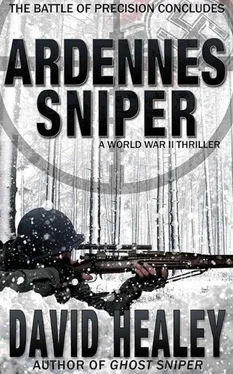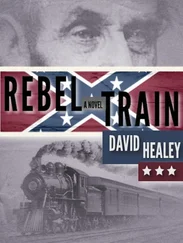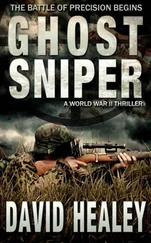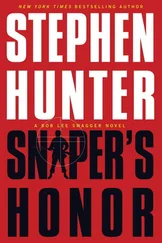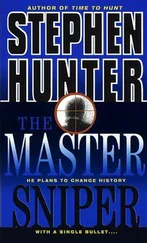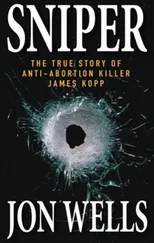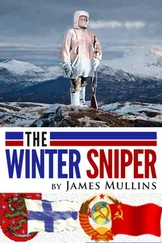The German column quickly regrouped. While the aerial attack had wreaked havoc, these soldiers were veterans of many such attacks. Those who could got back to business, and the Kampfgruppe rolled on.
“Looks like they forgot about us,” the Kid said.
“Don’t be so sure,” Vaccaro replied.
The Germans were not about to leave their flank unprotected from the soldiers on the road. A second panzer rolled into position beside the burning hulk. It wasted no time pumping a shell into the nearest American truck on the road. The truck blew apart, scattering fenders, doors and hood like steel confetti. The Americans on the road scattered, but the snipers were well hidden.
“What now, Lieutenant?” Vaccaro asked. “I don’t think we can do much good here without a bazooka.”
Mulholland patted the front pocket of his coat, where he kept a map. “The Germans must be headed toward Habiemont. There’s another bridge near that town where they’ll try to cross the river. We can try to beat them there.”
“How, sir? They’re thick as hookers in Times Square on that road.”
“Who said anything about taking the road?” Mulholland said. “We’re going cross country.”
• • •
Some things were easier said than done. Cutting cross country through snow-covered fields on a sprawling battlefield was one of them. The snipers stared out at the world of white before them.
Through that snow, every mile on the way to the bridge at Habiemont would be as exhausting as running a marathon.
“I got an idea,” Cole said.
He drew his knife and headed toward a stand of saplings at the field’s edge. With two swift motions, he cut down two of the saplings. Taking one, he bent it around until it was in an oval shape, then tied the two ends together with a piece of half-inch rope. He then wove the rope back and worth in a rough web pattern, like a drunken spider might make. He repeated the process on the other sapling. Within five minutes, he had the makeshift snowshoes strapped to his boots.
With Cole’s help, the others followed suit. “Keep this up, Cole, and you’re going to make Eagle Scout one of these days,” Vaccaro said.
The snowshoes would not have held up for an Arctic expedition, but they were enough to get them to the bridge — which they needed to do, fast.
“Cole, do you have any other tricks we should know about?” the lieutenant asked, already breathing hard. With the snow shoes they didn’t sink as far into the drifts, but it was still a workout to move quickly.
“As a matter of fact, I do,” Cole said. “It’s a little something I call running. It gets you there faster.”
The snipers broke into a trot. Off to their left, they could see the German column far in the distance. Headed to the same place. The race was on.
They heard more planes coming. “Those planes will slow them down and buy us some time,” the lieutenant said. “Like Cole said, let’s hoof it.”
Von Stenger stared in horror and wonder as the American planes decimated the column. A P-47 Thunderbolt fighter-bomber carried two 500-pound bombs. For the Germans on the receiving end, it was a devastating arsenal. The thousands of pounds of high explosive turned once-fearsome tanks into burning hulks.
The sight was both terrifying and mesmerizing. Fortunately, he and Friel were too far away to be in any real danger from the Allied bombs.
That changed when the planes returned from their bombing run to strafe the narrow road. Each American plane was equipped with wing-mounted .50 caliber machine guns. Like dozens of others, Von Stenger scrambled for shelter as the heavy slugs churned up clods of frozen mud and shredded whatever vehicles were in the line of fire.
Considering that the planes traveled at high speed, the strafing was over in an instant. The planes circled back to hit the column again, but this time the Germans were prepared. Behind a MG-42 mounted on a vehicle, he could see Sgt. Breger was one of those soldiers unleashing twelve hundred rounds per minute at the planes, which were well within range. Without doubt, the planes took fire, because they did not return.
Once the planes were gone, Von Stenger crawled out from the roadside ditch and was amazed to see Friel still standing in the back of the Volkswagen, unscathed, even though the strafing had punched holes in the hood of the vehicle.
The bastard had nerves of iron.
“That was just two planes,” Friel said ruefully as Von Stenger climbed somewhat sheepishly back into the vehicle. “They will return, and perhaps in greater force. Fortunately for us, their base in Saint-Dizier is more than one hundred twenty kilometers distant. Even if those were scouts, that buys us some time.”
“It will take hours for the entire Kampfgruppe to get there on these roads.”
“Do you have an alternative to suggest, Kurt?” the Obersturmbannführer snapped at him.
“No, Herr Obersturmbannführer.”
“I wish you did.” The SS officer folded his map and stowed it in a pocket of his coat. “Keep that rifle of yours handy. Perhaps you can shoot down an Allied plane or two.”
The Kampfgruppe continued along the road, its progress slowed by the burning or disabled vehicles in its path. Panzers now doubled as bulldozers, pushing the wreckage off the roads. Behind them, a single tank was engaged with a small American unit that had scattered with the first shot from its 88 mm cannon.
With the weather clearing, Von Stenger knew well that they were in a race against time. The return of the Americans to the skies meant real trouble for them. It was hard to ignore the fact that the Kampfgruppe was spread out now over many kilometers, making concerted movement difficult and communication challenging.
They had to get to that bridge at Habiemont.
“Come with me, Kurt.” Friel climbed aboard a tank. A single tank could race ahead and hold the bridge. It was their best hope. He ordered Breger to follow in a half track equipped with a machine gun.
At speed, a Tiger II tank could move at twenty-four miles per hour. The road ahead was narrow but frozen hard, not broken up yet by the passage of other vehicles. They moved close to top speed, the countryside of snow-covered fields and rolling hills passing in a satisfying blur. If there were civilians, they had the good sense not to show themselves. Friel rode with his head out of the hatch, keeping one eye on the skies and the other on the road ahead. The tank crew tried to ignore the falling fuel gauge as the roaring engine drank greedily.
Von Stenger rode on top of the tank, feeling very exposed. He would have preferred to be on the ground, but he could not have kept up with the mechanized treads of the tank.
From time to time, Friel leaned down and shouted into the tank below, “Faster! You can do better than that! The road ahead is clear. Full throttle!”
Despite the speed of the tanks, it took them an hour to reach Habiemont. Finally, the village came into view. It looked like something out of a storybook with the little houses all covered in snow. The bridge came into sight.
The bridge was narrow, so the massive tanks would need to cross one at a time.
Movement ahead caught Von Stenger’s eye. He spotted a knot of soldiers in olive drab struggling up the far bank of the river. They appeared lightly armed, as if they were not concerned about defending the bridge. What had they been up to? With a sinking feeling, he realized that one of the men held a large spool of wire in his hands as he scrambled up the bank. Another man held a detonating plunger.
Von Stenger lifted his rifle and shouted a warning. “Friel, they are going to blow the bridge!”
Their driver had already stopped so that Friel could direct the panzers, so Von Stenger stood and balanced the rifle across the tank turret. He put the crosshairs on the American engineer holding the spool of wire and squeezed the trigger. It was not too difficult a shot — no more than 300 meters. The man crumpled and the spool of wire went bouncing away. For a moment it looked as if it might roll right into the river. But the wire got caught on something and another man slid down after it. Von Stenger worked the bolt of his rifle.
Читать дальше
